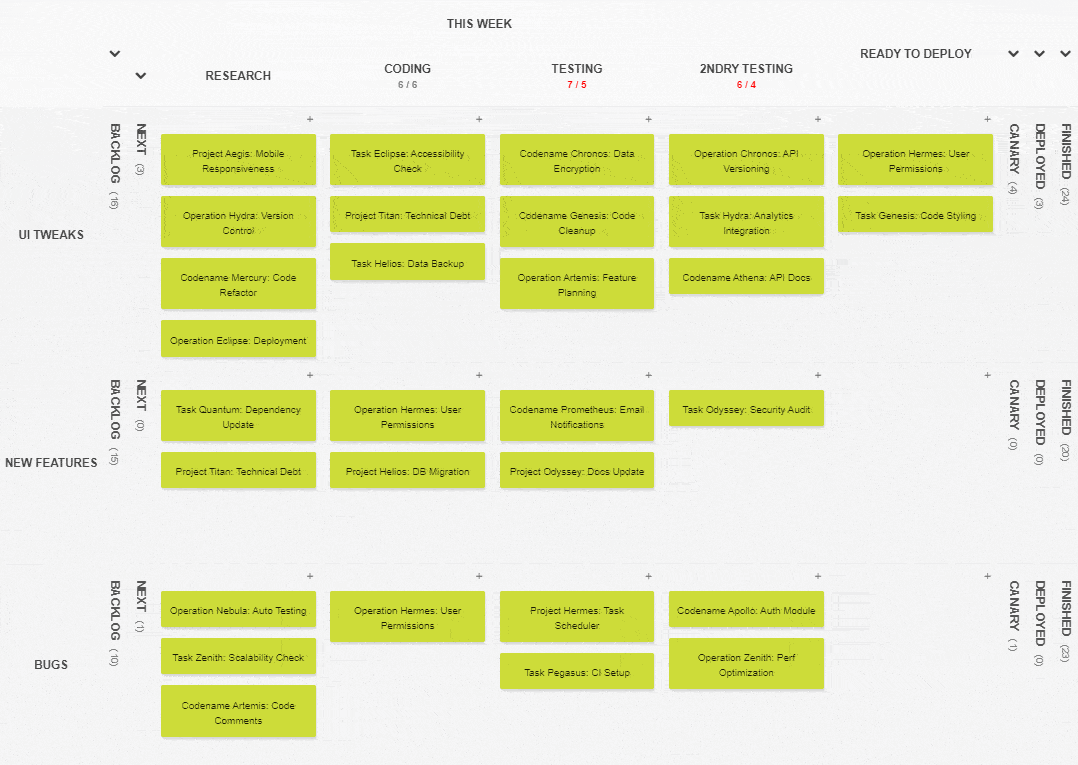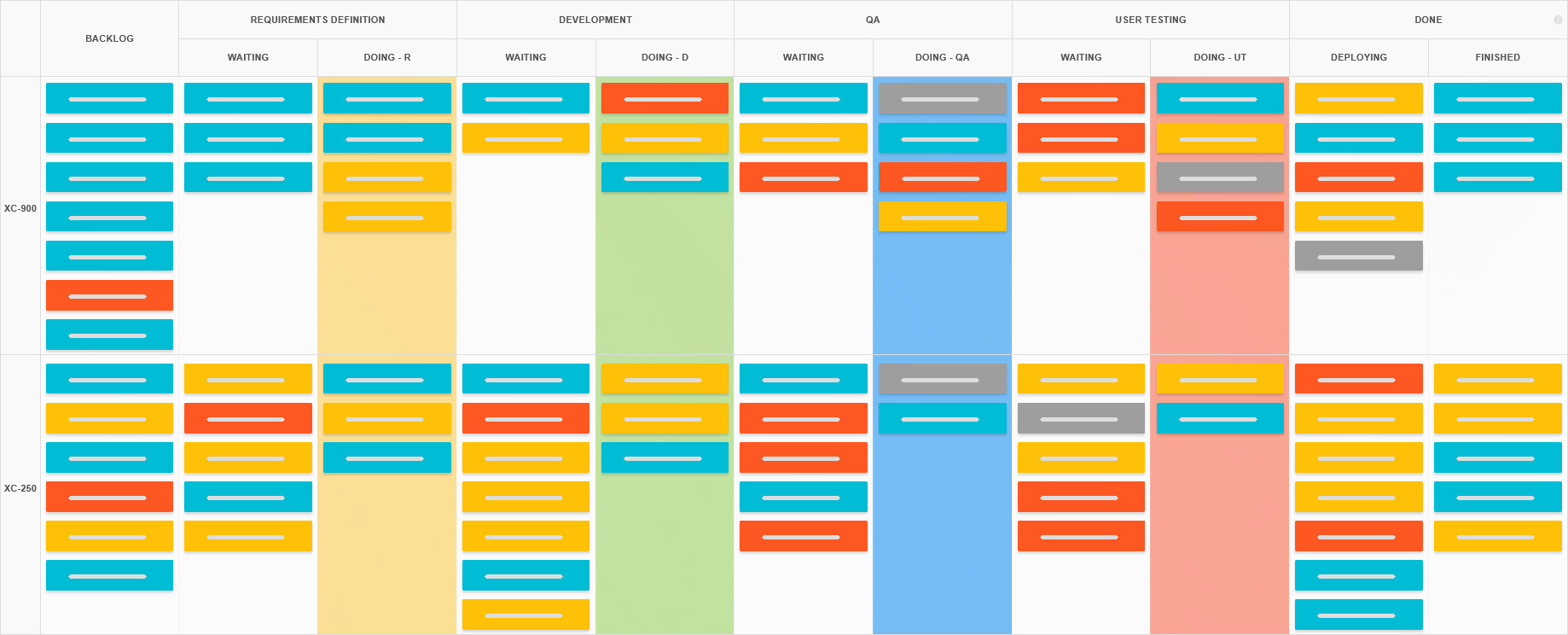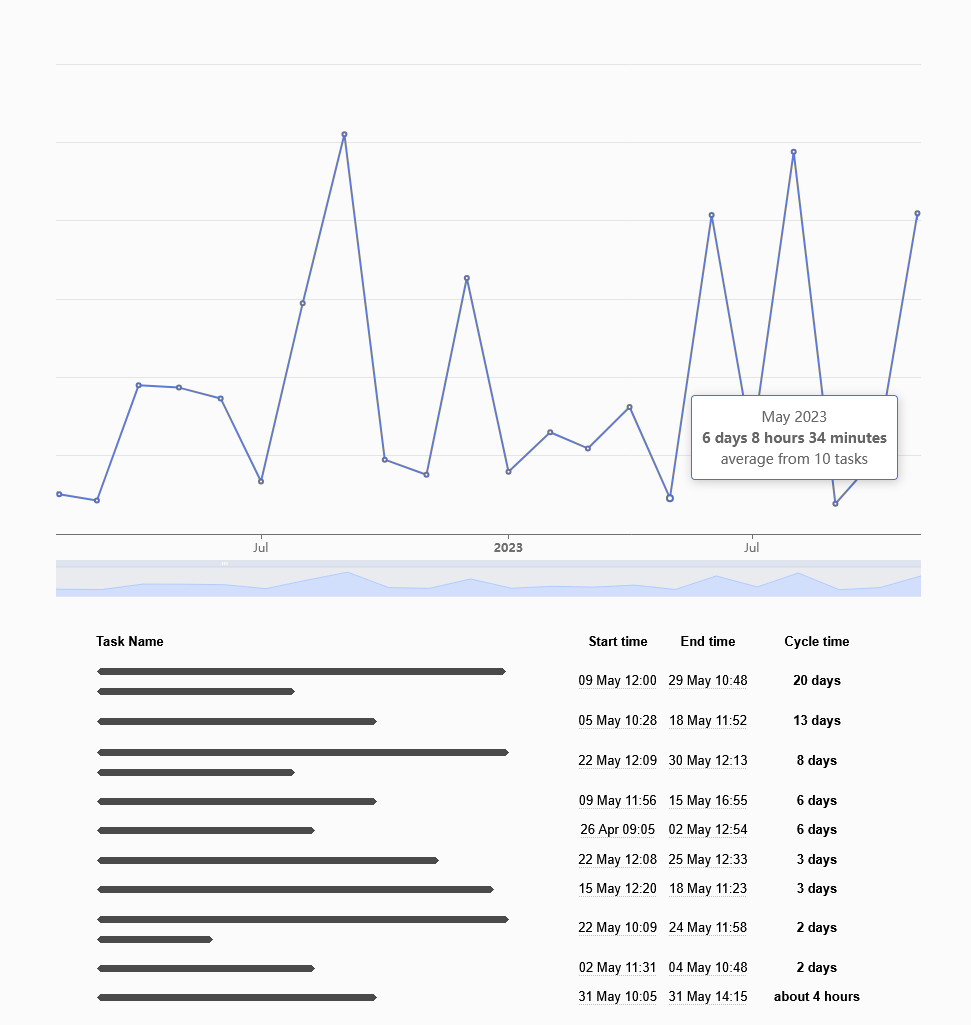Blog
Mastering Flow as the Key to a Smoother Kanban System01 Jul 2025

Adopting Kanban as a visual management system often brings teams an initial sense of control: the work is visible, processing limits set, and the team feels more “agile”. But underneath the comfort of task cards and swimlanes lies a deeper challenge—ensuring that work items aren't just moved, but moved smoothly. That is where understanding the distinction between resource efficiency and flow efficiency becomes pivotal. The first focuses on people, the second on the process. A working Kanban system aligns with the latter.
The flaw of believing in staying busy no matter what
Because resource efficiency is often mistaken for productivity, it’s not uncommon to see engineers, analysts, or designers juggling multiple tasks simultaneously, with the implicit belief that idle time equals waste. As if keeping everyone “fully utilized” meant maximum output. It doesn't.

This flawed logic mirrors the thinking that having all vehicles on a highway moving at once leads to faster travel. But the result is usually gridlock. In a Kanban system, this gridlock takes the shape of ever-growing work in progress, unpredictable cycle times, and frustrated team members who are always busy, but rarely deliver completed work.
Flow efficiency definition
Optimizing the process for flow means a shift in focus from workers to work. A move towards measuring the ratio of value-adding time to total lead time. For example: a task spends seven days in the system, but is worked on actively for just two hours - the process' flow efficiency is dismal. And the issue isn’t a lack of effort on the team's part — it’s that work is waiting far too long.
Where team member efficiency optimizes for 100% workers' time utilization, flow efficiency analyzes how long it takes for an item to get from start to finish (lead time), and what portion of that time is meaningful (working time/cycle time).
What difference does it make to optimize for workers rather than workflow?
Imagine a software team with eight developers. The team leader, eager to maximize throughput, assigns each developer two tasks. As blockers surface and dependencies compound, tasks queue up—half-finished, half-forgotten. Reviews are delayed, testing tasks pile up, and while no one is truly idle, nothing gets finished quickly either.
In contrast, a team that proactively caps concurrent work via Kanban’s WIP limits may occasionally see idle developers but completed tasks flow through the system faster, with fewer defects, and with higher predictability.

The first team is resource-efficient, while the second is flow-efficient. The latter wins in environments where lead time, adaptability, and quality matter — which, to no surprise, is almost always.
The difficult physics of knowledge work
One cause of the workers vs work management dissonance is that knowledge-based work doesn’t behave like manufacturing work. A person writing code, analyzing risk, or designing a product mockup cannot be optimized as a machine on an assembly line. There are additional factors at play: cognitive load, context switching, and interdependence. Being forced to multitask erodes quality and delays feedback loops, yet teams often fall into the trap of equating “everyone working” with making progress.
To counteract this, Kanban enforces constraints in the form of WIP limits, pull policies, and classes of service/tasks. But, to master these tools, managers must understand that optimizing for flow sometimes means tolerating temporary worker idleness in favor of accelerated total work throughput.
Diagnosing flow blockers
Before your team can achieve flow efficiency, it must inspect where work is stalling. Here’s how:
- Visualize waiting time vs. working time.
Split the columns of your Kanban board into “waiting” and “doing” sub-stages to show invisible delays.
- Track flow metrics, not only throughput.
Lead time, cycle time, and aging work-in-progress tell a richer story than the count of completed tasks alone.
- Identify queues and dependencies.
If tasks are constantly waiting for a specific action - work stage - e.g., review, testing, or external input, these should be your flow leverage points. - Reduce batch sizes.
The larger the feature or project, the higher the risk and delay feedback. Slicing work into smaller, independently valuable pieces greatly improves flow. - Align WIP limits with true capacity.
Do not base the limits on headcount, but on empirical flow data—how many items the system can move before it's blocked.
The accompanying culture shift
Optimizing for flow efficiency requires more than a change of work planning tactics — it’s a cultural adjustment, too. The team must decouple the idea of staying busy from being valuable, while managers need to stop rewarding individuals for high task volume and instead elevate the systemic throughput of finished high-quality work.
The change also demands trust: in the process, in the team, and in the idea that sometimes the fastest way forward is doing less in parallel.
Flow as the strategy
Kanban may appear to be all about moving cards, but it’s actually more about making the movement of value visible, and then relentlessly improving it. Where focusing on resource efficiency will give you full calendars, concentrating on flow efficiency will yield predictable, steady outcomes!

Sign up for a 14-day free trial
to test all the features.
Sign up now and see how we can help
your organization deliver exceptional results.